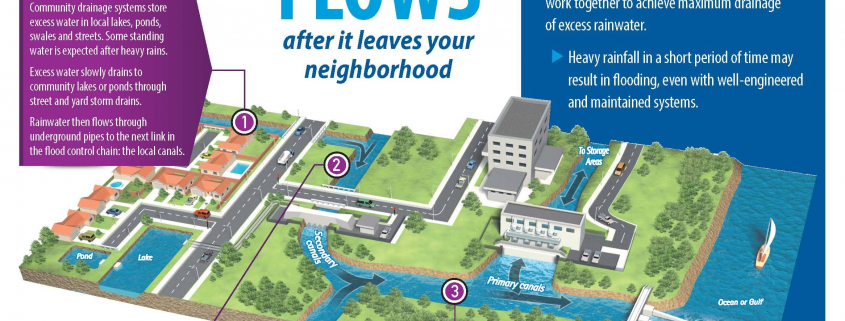Your Question Answered
How does stormwater drain from my neighborhood?
When it rains, stormwater should flow from rooftops, driveways, and streets into a retention pond or storm drain. Then, if needed for flood control, flow out through the pond’s discharge control structure into a LWDD canal. Most of the time, this drainage occurs unnoticed by the average individual. However, during a severe storm, flooding in streets, sidewalks, and driveways can occur. This temporary flooding may cause concern, but it is important to note these low-lying areas are designed as secondary detention areas to protect buildings and homes from flooding.
Within LWDD’s boundary, stormwater drainage is a shared responsibility:
- Neighborhood drainage systems operated by property owners or residential associations
- Secondary drainage systems operated by LWDD or local government
- Primary regional system operated by the South Florida Water Management District
Water managers in charge of primary and secondary systems are continuously monitoring the weather and canal levels to proactively respond to changes in canal elevations. In anticipation of a heavy rainfall event, water managers will make operational adjustments to maintain appropriate water elevations for flood control. Throughout the year, routine canal maintenance and inspections of control structures, pumps, and other infrastructure are performed to ensure the overall functionality of the water management system.
Property owners and residential associations have a similar role regarding their neighborhood drainage system. They must maintain their drainage infrastructure to ensure that inlets, storm drains, underground pipes, and emergency discharge control structures are clear of potential blockages and working as designed. Property owners and associations should conduct an annual inspection of the drainage infrastructure, and repairs should be made before the onset of storm season.




